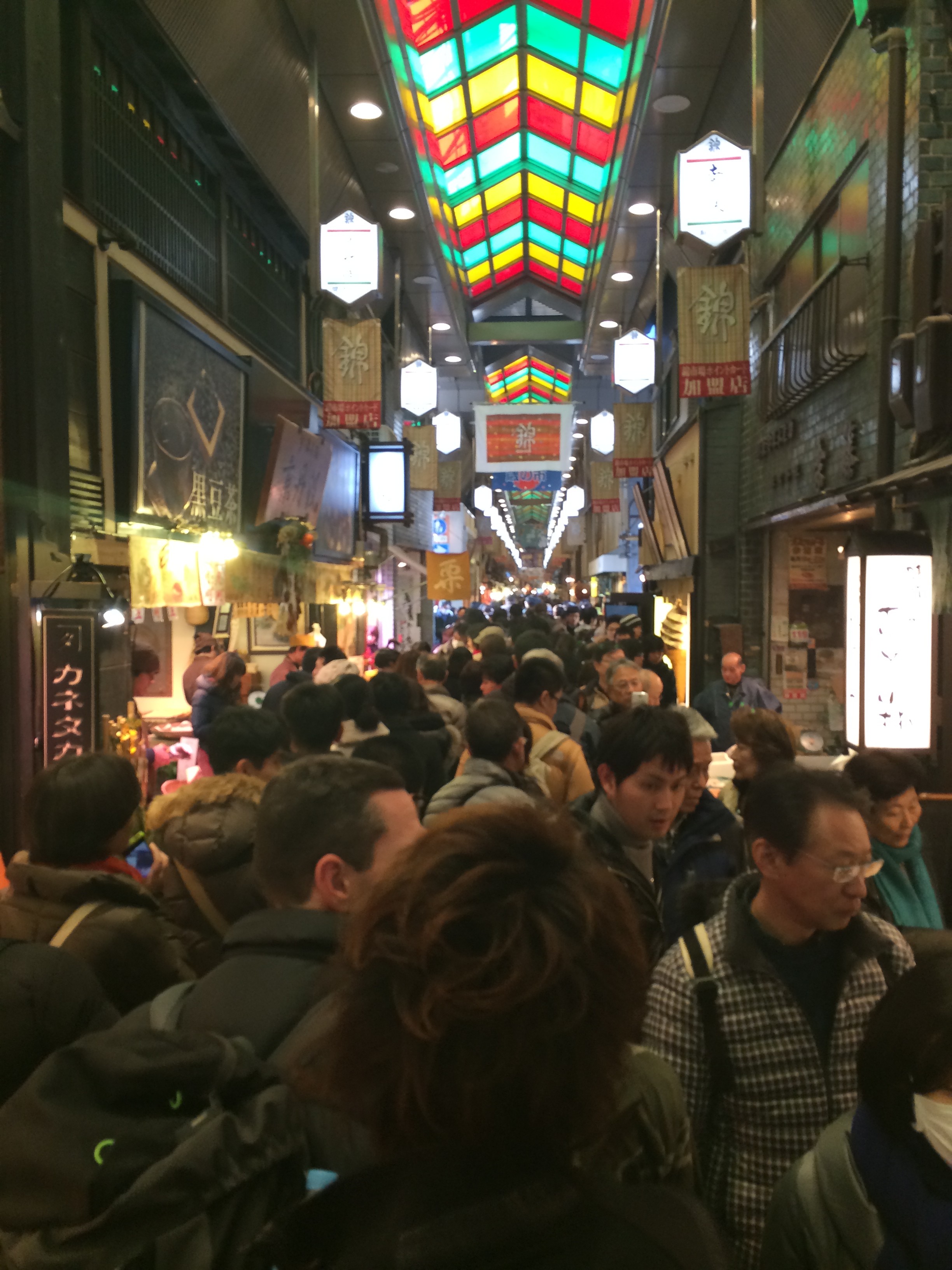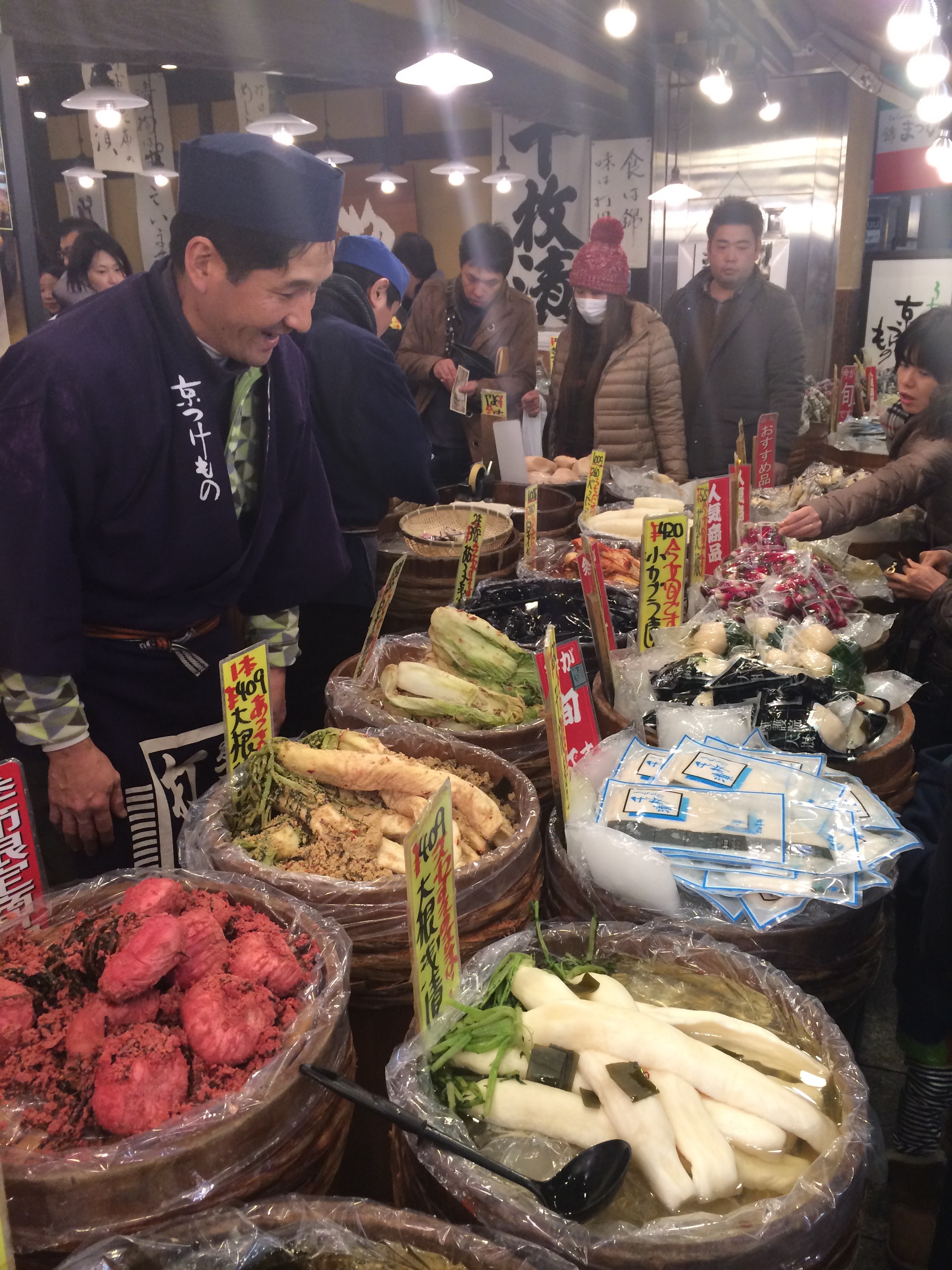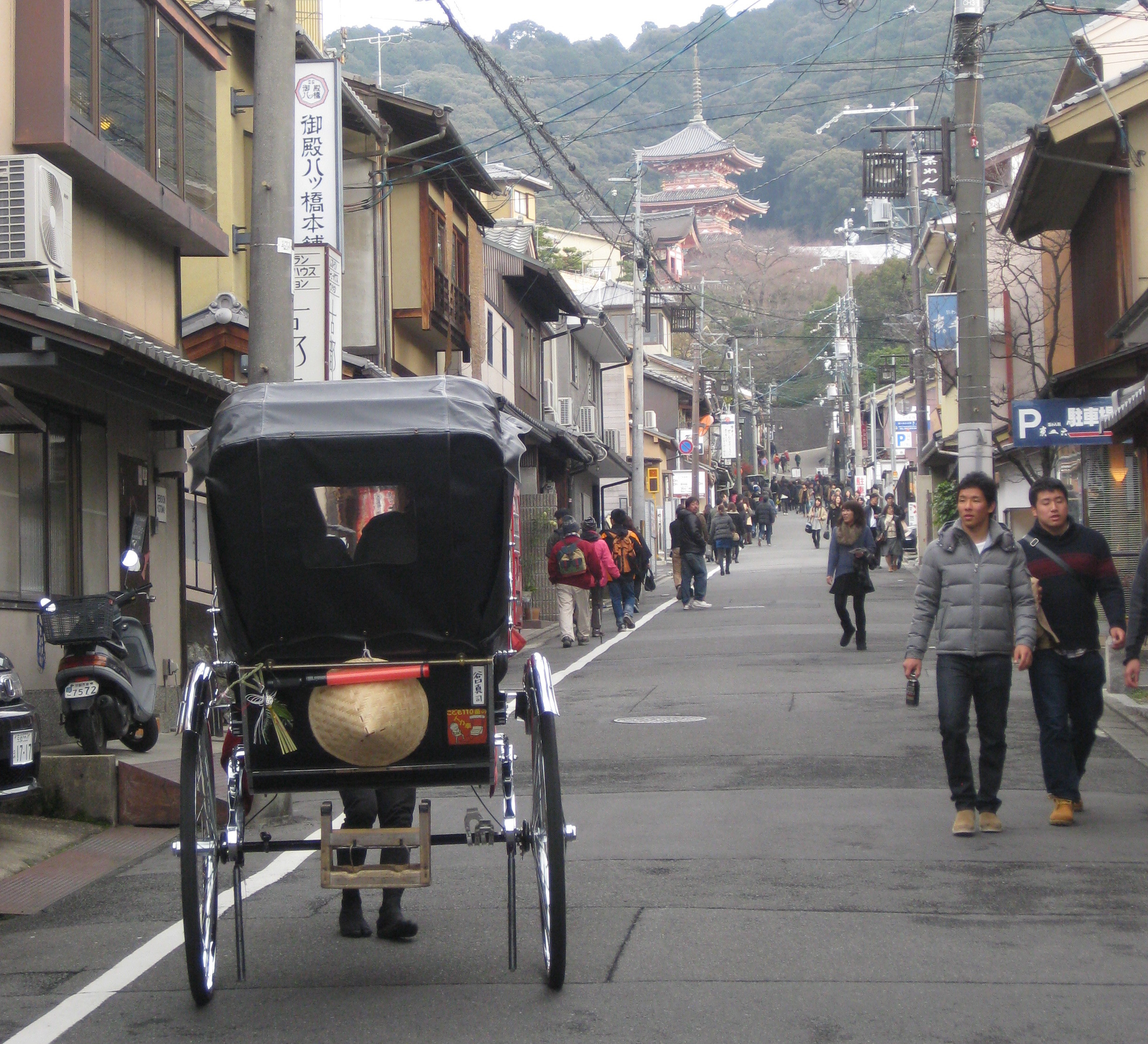A Day in Kyoto

From the minute we step into the streets, it is obvious that Kyoto is a whole new world compared to Tokyo. For a start, the pace is much slower than I expected for a big city. The main street is flanked by covered walkways, filled with piped music and it has a distinct village feel.
Colby is tired and in a foul mood, and so I make every effort to find a suitable place to chill, in an efficient manner, even compromising my penchant for all things quaint and independent, and soliciting interactions with chain establishments such as Starbucks. But Colby throws a new twist of snobbery into the impossible mix, insisting on an establishment with an espresso machine. And so we walk . . . and walk . . . and walk.
We walk through the covered malls until the big chains peter out, making way for traditional little stalls mingled with shops full of trashy crap. The village-like streets stretch for miles and have an almost market feel to them . . . until we find ourselves in the market. Nishiki Market, or what the locals refer to as Kyoto’s pantry.
Nishiki Market is Kyoto’s largest food market and has somehow managed to maintain the authenticity of a traditional shopping street despite the developments of the years.
Now, navigating crowds is far from my favourite pastime, and Colby is in no mood for fighting fellow humans for breathing space, yet I find myself asking why? Crowds slow me down. They don’t become my million-mile-an-hour lifestyle. But right now, we have nowhere else to be, no deadlines and all the time in the world. So I insist on diving headlong into the market atmosphere.
We are swept up in the peristaltic crush between the stalls, all selling the main ingredients of traditional Kyoto cuisine. It is hard to catch a glimpse of the Japanese vegetables, whale meat and other unidentifiable foodstuffs between the infinite sea of humans. And sandwiched within a hundred or so other people, it is almost impossible to buy anything. Yet on the rare instance I find myself inside a stall, I am surprised to find it a peaceful haven almost void of people . . . before being engulfed by the human ocean once again.
By the time we are spat out at the far end of the market, I’ve reached my tolerance limit for people in confined spaces and Colby is suffering the sordid effects of caffeine withdrawal. And so we resume our search for a suitable café, turning towards the relative calm of the river. The river is broad, shallow and barren, but despite the leafless trees inhabiting it’s banks, and despite it’s starkness, there is something beautiful about this place. Something that screams: You are in Kyoto.
The temple district looms beyond the sleepy streets of Gion . . . although with its gobsmacking 1600 temples and 600 or so shrines, you could say the whole of Kyoto is temple district. And in the absence of any Colby-approved caffeine fixes, we decide on a bit of temple hopping.
In the days surrounding New Year, it is customary for the Japanese to visit temples to give thanks and make wishes for the coming year. The grounds of the Yasaka shrine are throbbing with people making their offerings, and stall holders selling their wares. The irony of the stall selling toy automatic weapons is not lost on me and I wonder who actually heads down to the temple on New Year to buy a plastic AK47!?
The Chion-in temple sits on a hill overlooking the Yasaka Shrine, it’s grounds offering solace from the crowds below. The temple gates are almost as impressive as the temple itself although that isn’t difficult as the temple is undergoing restoration. The main religions in Japan are Shintoism and Buddhism, followed by about 80% of the population practicing a combination of the two. Shintoism is something I haven’t heard of before, but upon a little research I learn that it doesn’t have a figurehead or leader, focuses on a peaceful way of life, is co-operative with other religions and was not born of any one event, but rather, at least in my mind, evolved with the culture.
It is well worth paying to enter the Japanese garden which sits within the temple grounds, if for no other reason, to show my respect for the endless hours of work that goes into the upkeep. It was built by one of the temple leaders . . . or something . . . I don’t really care . . . I just sit among the manicured leaves and pastel streaks of colour, soaking up the peace.
Still craving his caffeine fix, Colby insists we head back toward town and resume the search. The heart of Gion is haunting, mystical, almost eerie. The little streets are alive with people in traditional dress, and dotted with stores selling traditional Japanese wares, secret little courtyards and gardens. They remind me of everything I imagined in the book, Memoirs of a Geisha. I can almost see Hatsumomo strutting around one of these deserted courtyards, Dr Crabb sitting in the back of one of these tea rooms and I’m sure one of these temples must be the temple for lost children. And then, although I haven’t even been on the hunt, I spot her! A real Geisha, with the white face paint and immaculately styled hair. She is on the arm of some bloke and I begin to wonder what constitutes the job of Geisha in the 21st Century.
Selecting a restaurant for lunch is like a lucky dip, and stepping through the curtains in the plain façade, is like stepping into a whole new world. We are led upstairs, presented with a single option of set menu, and with a slight air of confusion are served our food which, in typical Japanese style, is light yet sufficiently filling.
Refuelled, albeit in the absence of caffeine, we begin the steep climb up the paved streets towards the Kiyomizu-dera Temple. The beautiful timber facades flanking the narrow streets house traditional fabric and kimono stores, pottery and other souvenir type shops. We find amusement in watching the rickshaw pullers . . . hauling lazy tourists up the hill, thankful that we never seem to be harassed by the tourist ride hawkers . . . although with a combined weight of close to 200kg, I can only guess at the reasons why.
The Kiyomizu-dera Temple sits high above the city and the grounds offer a peaceful reprieve from the bustle below. The temple is said to have a shrine which resembles the entrance into a woman’s womb, but after a brief scan of the area, we don’t seem to be able to find it. The temple itself is is one of few Japanese temples where an entrance fee is payable. Sticking to our protocol we settle for admiring it from afar.
Yet to find a suitable coffee fix for Colby, we head back down towards the centre of town, munching on steamed buns and admiring the peaceful simplicity of the timber clad streets. Taking another lucky dip, we finally find ourselves in an obscure courtyard which houses, much to Colby’s delight, an espresso machine. In the fading light of the afternoon we debrief our new found awe for the beauty of Kyoto . . . over, much to Colby’s disgust, filter coffee.







